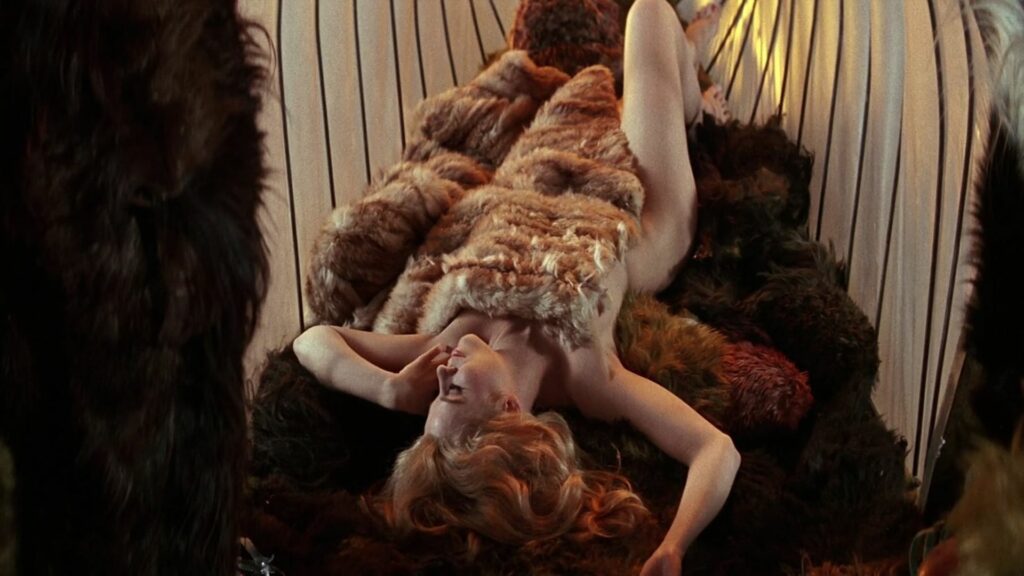
Barbarella (1968), like its contemporary 2001: A Space Odyssey (1968), has so often been imitated and referenced that it exists at a remove from its historical moment. It’s not that anyone would watch Barbarella and question whether or not the film was made in the sixties. It’s more a case of not recognizing what initially made Barbarella unique. At the time the most popular lexicon of science fiction images and symbols was available via television’s Star Trek. 2001: A Space Odyssey re-wrote what science fiction movies should and could look like in the popular mind while Barbarella appropriated retro-futurist designs and employed special effects common on Star Trek.
The resulting visual style of Barbarella was pure camp at a time when camp was still very much the domain of underground film and television. Barbarella was a super sexed space opera in the idiom of high camp and was, as such, a subversive blast at both sexploitation films and science fiction movies. Barbarella did for science fiction what Modesty Blaise (1966) did for the espionage picture: emphasized the sex and lampooned the narrative conventions of its genre. Barbarella never wanted to look like 2001: A Space Odyssey or Ikarie XB-1(1963), it was meant to look as fantastic as any fantasy or daydream could. After all Jean-Claude Forest’s comic strip embraced an unreal Pop Art sensibility.
Looking back on Barbarella from the vantage point of the twenty-first century what is alluring about the film is the queer coding surrounding the Anita Pallenberg character and the fact that this female centered film does not punish its female lead for being sex positive and horny. Setting aside the production issues, Barbarella is a film that celebrates female sexuality while objectifying the beautiful bodies of male and female performers alike. This inclusivity was inadvertent to be sure but it has garnered the film a large following in the LGBTQ+ community over the years. Today the campiness of Barbarella is part of its celebratory horniness and humor; it’s what makes it so essential a text for camp films even today.
Other films have imitated Barbarella and have failed to amass the same following. A film like Gwendoline (1984) is an obvious imitator yet its audience remains more of a small, predominantly male cult. The major difference is temporal, but the second major difference between these two films is that one stars Jane Fonda and the other does not. Fonda, a vocal feminist and advocate for decades, imbues Barbarella with a dimension that cannot be replicated. The fact that Fonda plays Barbarella somehow has transformed the titular character into a proxy for Fonda’s own political ideologies. Fonda’s beliefs and the mechanism of sexualized spectacle in the film may be at odds, but they are not mutually exclusive; they exist in a paradoxical tandem that opens the film up to queer and feminist readings.
And so Barbarella continues to find cultural relevance even as its outstanding production design remains thoroughly modern and completely linked to the swinging sixties. Filmmaker Roger Vadim’s legacy has essentially become Barbarella. As far as legacies go, could a filmmaker really hope for anything more than that? By and large it is his ex-wife Jane Fonda who remains the spirit and cultural force of Barbarella even today.
